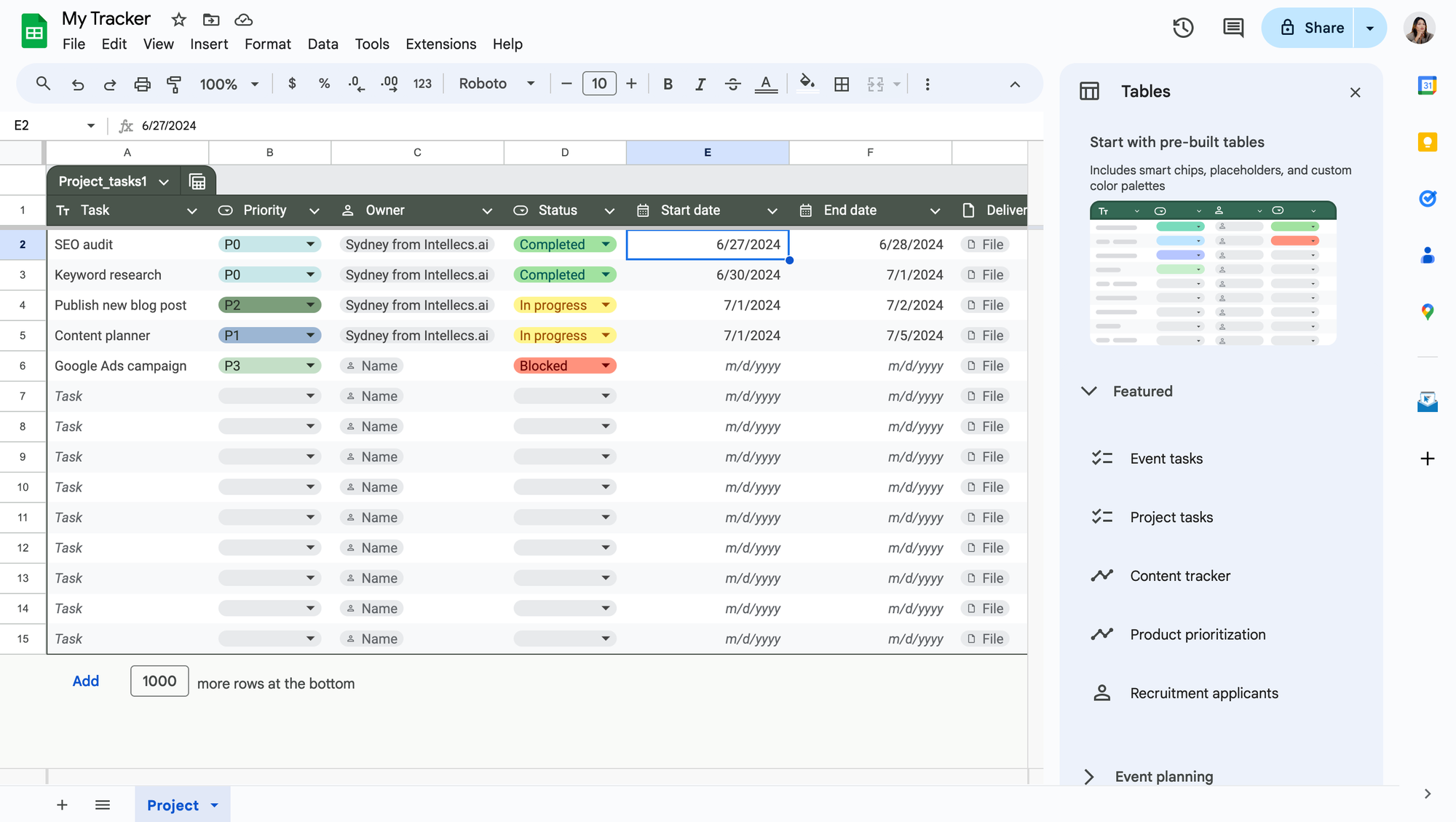The Power of Prioritization: How to Tackle Your To-Do List Like a Pro

Do you ever feel like your to-do list is a never-ending scroll of doom? Like no matter how many tasks you check off, there's always a million more waiting! Let me tell you the secret to slaying your to-do list: it isn't just about working harder - it's about working smarter. And that's where the power of prioritization comes in!
Stick with me as I reveal the tried-and-true strategies for tackling your to-do list so you won't have to worry about your tasks piling up the last minute!
Step 1: Brain Dump All Your Tasks (Yes, Even the Scary Ones)
Yup, that's the first step. Get all those tasks out of your head and onto paper (or a screen, if that's more your style). I'm talking about EVERYTHING from "do laundry" to "write that 20-page research paper." No task is too big or too small for this step.
The goal here is to create a master list of everything you need to do. Don't worry about organizing or prioritizing yet - just focus on getting it all out there or brain dump-ing.
Step 2: Categorize and Prioritize (Make Tough Choices)
Now that you've got your master list, it's time to start making sense of the chaos. Start by grouping similar tasks together into categories like "school work," "personal errands," or "side hustle." This will help you see the big picture and identify any patterns or recurring tasks.
Then, it's time to prioritize. This is where things can get a little tricky, but stick with me. For each task on your list, ask yourself two questions:
- How important is this task?
- How urgent is this task?
Objectives that are both important and urgent should be your top priority. These are the things that have serious consequences if they don't get done, like turning in a major assignment or going to your monthly dentist appointment for braces adjustment!
Tasks that are important but not urgent, like studying for an exam or working on a long-term project, should be your second priority. These are the things that are crucial for your goals and success, but don't necessarily have a tight deadline.
Stuff that are urgent but not important, like responding to a non-critical email or picking up a package from the post office, can be your third priority. These tasks might feel pressing in the moment, but they don't have a big impact on your overall goals.
And finally, tasks that are neither urgent nor important, like binge-watching that new Netflix show or stalking your ex's new fling, should be your lowest priority or maybe even deleted from your list altogether (yes, time to let go).
Step 3: Break It Down
Now that you've got your tasks prioritized, it's time to make them feel more manageable. Because let's be real, staring at a to-do list item like "write 20-page research paper" is enough to make anyone want to crawl back into bed.
The key here is to break down those big, intimidating tasks into smaller, bite-sized doable steps. For example, instead of putting "write research paper" on your list, try breaking it down into sub-tasks like:
- Choose topic and create outline
- Research and take notes
- Write introduction paragraph
- Write body paragraphs
- Write conclusion paragraph
- Edit and proofread
By breaking down your tasks into smaller, more specific steps, you'll feel less overwhelmed and more motivated to tackle them one at a time. Plus, you'll get to experience the sweet, sweet satisfaction of checking off multiple items on your list!
Step 4: Schedule It Out (Make a Game Plan)
Alright, you've got your prioritized list of bite-sized tasks. Now it's time to create a game plan for actually getting them done. This is where a good old-fashioned calendar or planner comes in handy.
Start by blocking out any non-negotiable commitments, like classes, work shifts, or appointments. Then, look at your high-priority tasks and estimate how much time each one will take. Be realistic here - it's better to overestimate and have extra time than to underestimate and feel rushed.
Once you've got a sense of how long each task will take, start plugging them into your calendar. Try to batch similar tasks together to minimize context switching and maximize your focus.
For example, if you have a bunch of errands to run, try to do them all in one trip instead of spreading them out throughout the week. And don't forget to schedule in some buffer time for unexpected tasks or emergencies that might pop up. Because let's face it, life happens.
Step 5: Use the Right Tools
While a pen and paper to-do list can get the job done, there are tons of awesome productivity apps and tools out there that can take your prioritization game to the next level. Here are a few of my favorites:
- Google Sheets: This versatile spreadsheet tool can do pretty much anything you need it to from custom task lists to fancy dashboard with charts and graphs to track your progress.
- Todoist: This app lets you create tasks, set due dates and reminders, and organize everything into projects and sub-tasks. Plus, it integrates with a ton of other apps like Google Calendar and Slack.
- Trello: If you're a visual person, Trello is a great option for organizing your tasks into boards, lists, and cards. You can add due dates, attachments, and comments to each card, and even collaborate with team members.
The key is to find the tools that work best for your unique needs and workflow. Try out different options until you find your perfect productivity stack.
A Real-Life Example
Okay, so let's say you're working on a big marketing project. You've got a million things to do, and you're starting to feel overwhelmed. Here's how you might use the power of prioritization to tackle your to-do list.
First, brain dump all those marketing tasks.

In this example, I used a Google Sheets pre-built table - a task tracker with columns for priority, status, and due dates. Then, I assigned each task a priority level:
- P0 - top priority!
- P1 - important but not urgent
- P2 - urgent but not important
- P3 - neither urgent nor important
Based on this, you can see that the SEO audit and keyword research are yout top priorities, so focus on those first. The content planner is important but not urgent, so work on that next. The blog post is urgent but not as important, so fit that where it can. And the Google Ads campaign is lowest priority, so save that for later (or maybe even delegate it to someone else).
Next is to break down each task into smaller sub-tasks and schedule them out in your calendar. For example, for the SEO audit, I might break it down like this:
- Crawl website with Screaming Frog
- Analyze site structure and navigation
- Check for broken links and 404 errors
- Optimize title tags and meta descriptions
- Identify opportunities for internal linking
By breaking it down and scheduling it out, you can make sure you are making steady progress on high-priority tasks without getting overwhelmed or sidetracked by less important things.
Conclusion
Prioritization is a skill that takes time and practice to master. The key is to start small and build up your habits over time (and to not beat yourself up if you don't get it perfect right away).
The goal isn't to do everything on your list - it's to focus on the tasks that matter most and make the biggest impact on your goals and well-being. By learning to prioritize effectively, you'll be able to work smarter, not harder, and achieve more with less stress (and maybe even have time for a social life, too).





